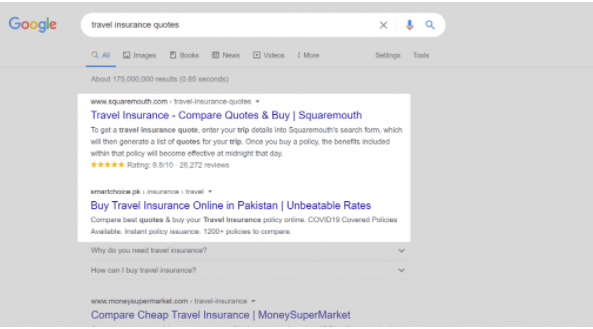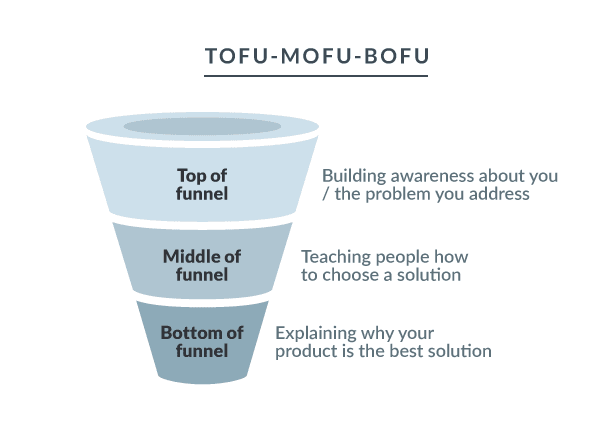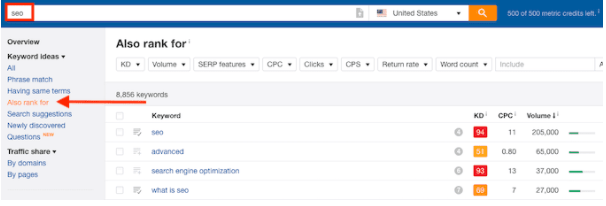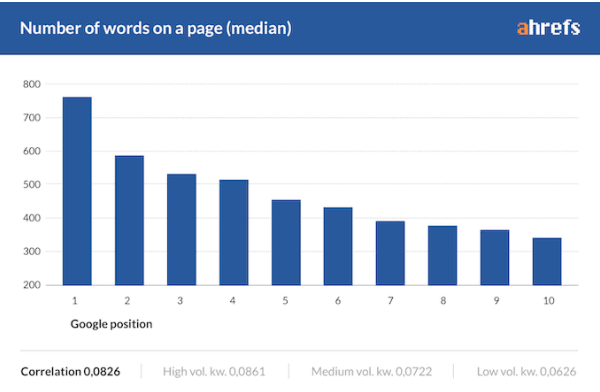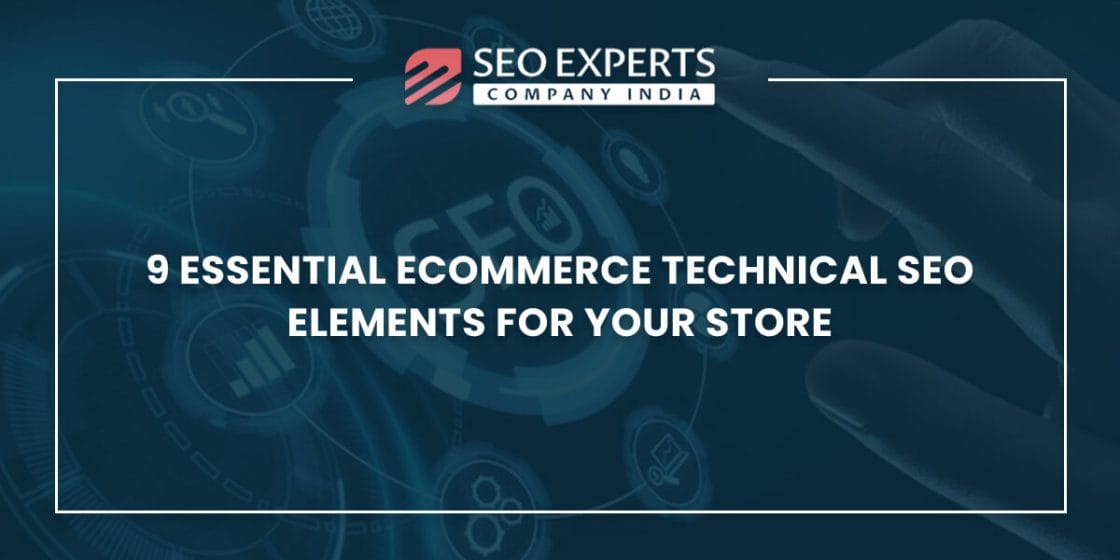Google’s ranking algorithm is a gradual process that you must get done using a carefully crafted on-page SEO strategy. Google’s ranking algorithm has several variables, including working on some elements and fixing the erroneous ones.
Here is a comprehensive checklist of the several on-page SEO factors based on the latest strategy. By implementing the SEO factors on your website, you will comprehend various benefits.
Here is a step-by-step approach to an easy and comprehensive understanding of the different on-page factors.
What is On-Page SEO?
On-page SEO is instrumental in optimizing every page on a website and draws the users and search engines towards the website.
What is On-Site SEO?
On-site SEO is related to the entire website’s optimization.
Difference Between On-Page SEO and Off-Page?
Off-page optimization is based on the right understanding of how you can get website backlinks.
Though there may be ways to rank a page without using many backlinks, they may not always be the correct method to rank a website.
What Does On-Page SEO Involve?
An essential part of on-page SEO is keyword research to make the website visible in front of the right customers. Google also considers several keywords on a website to understand the context your website involves. There’s a great relationship between Google search rankings and keyword-focused title tags.
Discover highly competitive keywords to include in the title tags.
On-Page Optimization
Keywords
User Experience
Multimedia
Copywriting
Links
Conversions
Understand and execute the various on-page SEO factors to determine how your page ranks in Google.
Our checklist lets you understand more about what you can account for:
The time spent on your website
The brand authority and expertise.
Drive the conversions.
Also, take care of the dwell time for a page by a user when they click on the Google results.
Here’s a checklist for optimizing the page for Google Rankings.
Basics
Google Facing Issues
Primary Words
Links
Writing
Images
Videos
User Experience (UX)
Structured Data
E-A-T Criteria
Conversion Optimization
Design & User Interface (UI)
The right way to begin the on-page SEO steps
The Basic Requirements
First of all, you need to set up Google Analytics on your website
It is essential to set up Analytics Software to find the right way to perform an on-page SEO campaign.
Also, find out about the primary keyword phrase.
Setting up a tracking mechanism is necessary for analyzing primary keywords while getting a performance check every month.
It only points to keywords in front of you and what you plan to track.
Issues Google is Facing
Find out if the page is crawlable.
Moreover, if a page is accessible and allows the Google spider to crawl, you also need to understand the robots.txt file having a noindex tag for checking if it is crawlable.
Use Screaming Frog to understand more about the crawl ability issues. Find more about Response Codes. Now, use the blocked robots.txt filter for better results.
Moreover, find out if the page is indexable.
Copy the URL to paste it into the Google search bar. Find out what your page shows.
If the page is not indexed, go to Screaming Frog Directives bar > Apply the noindex filter.
Find out if the URL is not displayed. It is also necessary to check the site architecture and understand if the URL is only three clicks away from the homepage. This principle is highly important for implementation in E-commerce enterprises and e-commerce websites.
Find out about the site architecture tab to get an idea related to the Crawl Depth Graph to spot the issue.
The website must pass all the tests. Go to Google Search Console URL Inspection > Request Indexing.
Another effective way of page indexing is gathering backlinks for it.
Primary Words
Targeting the right keywords is extremely important.
Keyword research is an extensive on-page SEO process, and people do not estimate it. You must double-check or triple-check it to find out the keywords being targeted with it.
Competitor analysis is a large part of keyword research.
Navigate to Ahrefs keyword explorer and learn about the focused keyword. Do not use high Keyword Difficulty (KD) & low volume keywords, esp[ecially if you have a new website.
The Webpage Word Counter boosts the Ahrefs SERP overview allowing it to become better with keyword analysis.
If you have already targeted this keyword, you will understand that you have already targeted it. Check the keywords on various pages, and you will understand what you can avoid. This is known as keyword cannibalization.
Make sure you also target only a single primary keyword per page. Check if you need to create a page for the same.
Use related keywords having the right intent in different pages. While one page may be informational, the other would be transactional. Every page needs to take care of the search intent.
4 Types of Primary Keyword Categories You Must Consider
- Informational – “The way to get backlinks.”
- Transactional – “Buying backlinks.”
- Comparison – “Moz vs. Ahrefs”
- Navigational – “TechNerds”
You must target users at all the stages of the marketing funnel.
Things to Check
Primary Keyword in the Title
The focus keyword must be present in the title tag without any exceptions.
Is Your Title Click-Worthy?
Title Tags are beneficial for on-page SEO. They help you improve the click-through rate (CTR).
Adding Modifiers to Your Title Makes a Difference!
The best title modifiers include “best”, “top”, or the year (“2020”) and help to understand long-tail organic search traffic.
Use the Entire Title Tag Space
Sixty-five (65) characters are present in the title tag. Ensure that you use every single character. Use the right focus keyword at the start of the title tag.
Also, use Screaming Frog to understand all the titles over 65 characters having Page Titles > with more than 65 characters.
Is Your Page Title Wrapped in An H1 Tag?
A page should have only a single H1 tag.
Use Screaming Frog to find out the pages with missing H1s.
H1 tab requires using the dropdown filter.
Is Your Primary Keyword Present in the Meta Description?
Make sure that you front-load your meta descriptions. Google uses several meta descriptions and extracts them from your page.
Create a Click-Worthy Meta Description
In fact, it is important to optimize your meta description. It must be under 160 characters for all your pages. Otherwise, it will appear as a truncated one in SERP- not an ideal situation for SEO.
Presence of the Primary Keyword in the URL
Include the keywords in the URL so that Google suggests the article.
Is Your URL Structure Lean?
UX is the deciding factor that is highly important for short URLs evaluation.
Is Your Primary Keyword in the First Sentence?
Make sure that you put the right foot forward to add the target keyword in the first line itself. This may not make sense. Additionally, it also does not look good. Add it in somewhere in the first paragraph.
Find Out if the Keyword Density is Much More than Your Competitors.
Also, check the competitors’ keyword frequency to help you design the content accordingly. Use natural writing. Moreover, the right tool also considers the competitors’ keyword frequency.
Have You Added Variations of Your Primary Keyword into the Copy?
Go to the Ahrefs Keyword Explorer and add essential keywords displayed in the “Also rank for” section. This tool complements the Google Keyword planner.
Adding LSI keyword synonyms which complement the primary keyword in the copy. Add it to the Latent Semantic Intent (LSI) keywords for helping Google understand your webpage’s theme.
Using Answer the Public on Google helps you get hold of the LSI Keywords. Exercise care that you don’t mix keyword intent for informational and transactional keywords.
Is the Page Different & Better than Your Competitors?
When it comes to content creation, you need to get unique and high-value long-form content.
Additionally, understand the various ways to create unique content. Also, use testimonials and case studies on the personal page.
You require having a better visual interface in comparison to your competitors. Transactional pages should also have well-defined CTAs and use the best-placed forms.
Users must have access to well-written content in the blog posts and FAQs. Build trust and authority by creating useful content for the user.
Your Copy Should be Free of Spelling and Grammatical Errors
Use Grammarly to check the spelling mistakes.
The Copy Should not be Less than an Average of What Your Competitors Deliver
Leverage the relationship between long content and Google rankings.
The content is different from the rest. The content must not be shorter than the average number of words that your competitors write.
Website Page Counter is a great tool to determine the number of words in the competitor’s article.
You Need a Well-Written Copy
Well-written content is much more valuable than lengthy content. Whether you want to produce a long copy or a short one, you need to deliver high-quality and useful content. You will need to hire a writer if you do not write well.
Is Your Copy Scannable?
The users like to scan the content before they read it. The headings must draw the reader’s attention.
The Complexity of the Content-Choose an 8th Grader-Like Content?
Users don’t care much about what you can do. They only care about how you can help them. Always use simple words and short sentences to make a point. It makes things relatable. Other tips to create an easy-to-read copy.
Use the Hemingway Editor to make your on-page SEO writing easy to understand.
Create an engaging copy
The copy should attract the readers and make it easy to understand and digest the topic discussed. It also increases your dwell time. Keeping your target audience in mind helps you create content stories that relate to them.
Do a Few Things to Make Your Helpful Copy
Use short paragraphs. Your copy should be short and sweet. Information should get absorbed quickly in little chunks. Refrain from using more than three sentences in a paragraph.
Structure Your Heading Logically
H1>H2>H3>H4
General rules
Use a Copy with Descriptive Headings
The headlines describe what content comprises. A reader scans all the headings before you read it. Make sure that you use keyword variations, synonyms, and LSIs in your headings. Choose a copy using bullet points and numbered lists. Break your content into smaller chunks by adding bullet points and numbered lists.
You Need a “fresh” Copy.
Update old content after six months to keep it fresh.
Link Appropriately
Your Pages Need Good Internal Linking.
Also, interlink all the pages to build the site authority and increase crawlability. It helps the other pages to rank alongside the page with the link.
Internal Links Must Use Descriptive Anchor Text.
Use focus keywords to link with the internal links.
Optimize the Internal Links Based on First Link Priority.
Add links in the editorial stuff like the blogs. In this context, remember that Google uses first link priority. It goes just with the first link on a page.
Determine if the Page has Breadcrumbs?
Breadcrumbs are highly useful for dealing with large E-commerce websites.
Are the Internal Links Useful?
The internal links should be very natural to prove useful for on-page SEO. Forcing internal links makes them look unnatural.
Are All Your Internal Links Using Preferred URLs?
301 redirects make the URLs change. Always link to preferred URLs.
Your Page Must Get External Links.
It is important to link to trustworthy sources. Such links are like votes. As you get votes or links from high DA sites, it improves your reputation and trustworthiness.
Use the Affiliate, Sponsored, and Paid Links to Use the “NoFollow” Tag
Google Webmaster Guidelines state that you must nofollow all the paid links.
Your External Links Must Open in a New Window?
Try to keep users on your website for as long as possible.
Your Page Must not have Broken Links.
Broken links on your page will hinder the user experience. Therefore, your page must be free of broken links. Go to SEO Spider. Choose Response Codes > Client Error (4xx) Filter.
Are All Your Links Visible?
Your links should change color as anyone hovers on them. Also, they should be distinct with an underline and or a different color (generally blue).
High-quality images
Your page should have many more images than your competitors.
Add different and more images to your website.
Your images should be unique to your website.
Try to add different and unique images to the blog posts, primarily if they have not been used before. An extra effort is always helpful to elevate your brand. High-quality images are helpful for on-page SEO.
Use the suitable image format.
Some of the best image formats include PNG, JPEG, or GIF.
You need to optimize images; otherwise, it increases your web page loading time.
Find out if your images are sized appropriately.
Your image must be resized as per your blog.
Image file size & Image compression
Make sure that you compress your images online to less than 70kb. The pictures can be the main issue affecting website load speed. The app TinyPNG will help to optimize the various images.
Your images should have descriptive file names.
Name the image files in the best way to incorporate the right descriptive words. It helps Google with SEO, in the image description and especially in the alt text.
Test the website’s accessibility and ensure it gives a good user experience to any visitor.
Name the image in this way.
All your images should have descriptive and accurate tag descriptions such as file names and the use of descriptive keywords in your images.
Video Optimization
Having video content on your page increases dwell time. Make sure that you invest in videos to outrank the competition.
Use relevant videos on your page and use a primary keyword to tag them.
The Videos Should be Unique to Your Brand.
Embed a video from YouTube with visual content to establish your presence on YouTube.
Are the Videos High-Quality and Valuable?
Work on video scripts to ensure that you get an engaging profile on YouTube.
Have a Responsive Video Content
Your video should be responsive. If that’s not the case, make sure you fix the website design.
Are the Videos Hosted on the Right Platform?
Make sure that you embed YouTube videos in your blog. Doing this is important from the SEO perspective.
Are the Video’s SEO Elements Optimized?
Add your focus keyword to your video’s title.
Page Load Speed
Page loading should be less than 3 seconds. It is a major ranking factor for a great UX.
Verify that:
Use minified CSS and JS in Code optimization.
Avoid unnecessary redirects.
Compress all images.
Enabled browser caching and file compression.
Have an optimal server response time.
Use PageSpeed Insights for page review and track the areas which can be improved.
User Experience (UX)
Page Speed is a significant user experience factor. The loading speed should be less than 3 seconds. Use GTMetrix and Google Speed Insights to check the web page speed.
Responsive Design and Mobile-Friendly
Your web page should be responsive because Google carries out mobile indexing.
Your Website Should be an SSL Certificate.
Google can rank your pages only if they have an SSL certificate, which renders them secure. Ensure your page’s security is up to date as you install an SSL certificate.
Font recommendations
The font type should be legible and readable on several devices. Your font size is large enough for reading quickly on all devices.
Does Your Page Use Aggressive Interstitials?
Google does not use websites using excessive popups. Planning using them and then using them once a user. It reaches the second or third page. Avoid using popups on mobile pages.
Your Page Should not have Aggressive Ad Placements.
Google Panda works against webmasters displaying aggressive ads on their websites alongside thin content.
An SEO-driven page is built to serve the user first. Use ads that do not hinder the user experience.
Is Your Address Prominently Displayed?
Your Contact and Address should be displayed in the website’s footer.
Structured Data
Is Your Website Address Using Structured Data?
Structured Data is not related to Google’s Algorithm. But, it increases the user experience as we implement the same on our website.
Wrap the website’s address using structured data to help Google understand your business better.
What it means
It means that the page must use structured data or automatically incorporate structured data, especially if you are working with WordPress. Use RankMath to add schema automatically.
Is the Structured Data Set Up Correctly?
Check if your schema is implemented well. Google Structured Data Testing Tool can help you with this.
E-A-T Criteria
Do You Have a Health, Financial, or Legal Advice Service Website?
A website that offers health, financial, or legal advice must have higher trustworthiness and authority. People get hurt if you suggest or give you a piece of inaccurate information. Your page should provide the accurate and right information.
Your Page Must Have Appropriate Disclaimers.
A website that offers health, financial and legal advice must have a proper disclaimer to get more trust.
Your Page Must List and Link to All Sources of Information.
Ensure that all the shared information gets backed by sources.
Don’t copy the content, and make sure to credit the author who created the original content. This common courtesy goes a long way.
Your Blog Content Must have a Visible Author.
The SEO Performance suffers if you do not mention the author. You need a box having a detailed description of the writer. Also, add the author’s social media links to enhance your site’s trustworthiness.
Your Author Should be Credible and Qualified to Write About the Topic
It surely matters if you experience what you are talking about.
Google ranks the content well if you know about the topic you are writing about.
Each Author Must have a Dedicated and Detailed Author Page
The author page is not a ranking factor, but it surely adds trust to your website.
Conversion Optimization
If the page has a clear call-to-action (CTA), it will assist in goal completion. A goal can be transactional or informational. The goal is based on the focus keyword you are trying to rank for.
Every website page should have a Call-to-Action (CTA). In the case of a transactional page, the goal can be signups and phone calls. For informational things, the goal is related to social media shares and blog comments.
Is the Page Shareable?
Address all the social media share buttons properly on all your blog posts. Use Sumo to add social media buttons.
Design and User Interface (UI)
The website design should be modern and updated. The website should be professional and well-updated according to the modern website design. Hiring a top-notch SEO Company India will help you analyze all such aspects.
Conclusion
On-page SEO involves web page optimization for content and search engine crawlers. Due to many moving parts, it can be easy to overlook a few elements or tweak them incorrectly. One needs to master techniques and follow best practices to make the website user and search engine-friendly. As you nail your on-page optimization by tying it closely with UX, It will help you reach top rankings and position you there.


